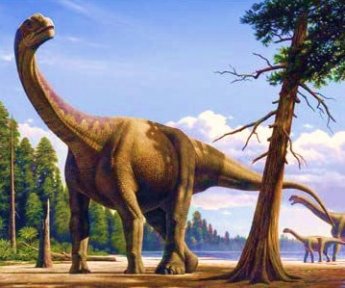The deposit of eggs of dinosaurs
 In the south of France, near the city of Montpellier in 1996 after a long search, Alain Cabot discovered a unique paleontological site, which is 10 km long and 4 km wide, over 40 sq. km. where they were discovered fossil remains of bones, but more importantly, dinosaur eggs. This site is one of the most prestigious in the world thanks to the findings constants related to the excavations in permanent activity. Historically, the first discoveries of dinosaur eggs were recorded precisely in the south of France in 1859. From that moment on, the eggs fossils have been found all over the world, and the vast majority of these sites, including Meze, date back to the Late Cretaceous. In the field of Meze the discovery of dinosaur eggs far exceeds that of bone, unfortunately only 2% of the eggs are found whole.
In the south of France, near the city of Montpellier in 1996 after a long search, Alain Cabot discovered a unique paleontological site, which is 10 km long and 4 km wide, over 40 sq. km. where they were discovered fossil remains of bones, but more importantly, dinosaur eggs. This site is one of the most prestigious in the world thanks to the findings constants related to the excavations in permanent activity. Historically, the first discoveries of dinosaur eggs were recorded precisely in the south of France in 1859. From that moment on, the eggs fossils have been found all over the world, and the vast majority of these sites, including Meze, date back to the Late Cretaceous. In the field of Meze the discovery of dinosaur eggs far exceeds that of bone, unfortunately only 2% of the eggs are found whole.
In the late 70s he began to use a classification system parallel to that used for the skeletons, a Paratassonomia based on specific criteria applicable to the eggshells.
The study of the eggs has revealed that all the members of one and the same large group of amniotes have one and the same basic structure of the shell composed of crystals of calcium carbonate (aragonite or calcite) different according to the group they belong: turtles, crocodiles , lizards and birds. The paratassonomia is also applicable to dinosaur eggs, as reptiles (albeit extinct).
All types of dinosaur eggs described are attributable to a parafamiglia, and, despite the simple form of the egg, the structural and morphological criteria used to distinguish the different parafamiglie are numerous: the size and shape of the egg, the type of exterior ornamentation, the thickness of the shell, the arrangement of the crystalline microstructure of the grooves and of growth, the arrangement of the pores and of the respiratory channels, the arrangement of the eggs in the nest. In this type of observation, it is essential to the use of an electron microscope.
These elements help to distinguish the oospecie, the oogeneri and oofamiglie, following the same principles used for the classification of living things. The suffix "oo" indicates that these are elements that come from a body, and not the body itself or of its skeleton.
A oospecie groups and defines the eggs that have among their common traits that differ from other eggs with other features.
With regard to the dinosaurs, it is reasonable to assume that eggs that belong to different oospecie have been laid by dinosaurs of different species.
At the current state of knowledge, the cases in which it is possible to correlate oospecie and dinosaurs are very rare, be sure to know what species it belongs to an egg you can only have the occasional cases in which an embryo is found inside. Unfortunately, in the field of Cabot, have not yet been found in embryos.
The study of eggs Meze has always been led by Monique Vianey-Liaud Institute of Science and Evolution of the Department of Paleontology of the University of Montpellier II. Monique, based on criteria paratassonomici assigns to each type of shell a generic term, followed by the suffix "oolithus" (example: shell from large tubercles = Megaloolithus).
In the Museum-Park were found seven different oospecie: gender Megaloolithus (due to the titanosaurs) characterized by a shell with the tubercles well marked belong to M. aureliensis, the M. Petralta, the M. siruguei and M. mamillary; gender Cairoolithus characterized by a thin shell belong to the C. roussetensis and C. dughii. At this last belongs an exceptional set of seven eggs that have a pathology also observable in modern birds: the shell is composed of two layers rather than one alone, this indicates that the egg has been considered once more inside uterus of the dinosaur, and has thus accumulated an extra layer. These eggs have been found whole because they never hatched: the shell too hard laminated and would have prevented the release of the child.
The seventh oospecie belongs to the genus Prismatoolithus caboti named in honor of Alain Cabot. These are the smallest carnivorous dinosaur eggs in the world, and analyzing their size and microstructure, were found similarities with the Troodon eggs found in Montana.

 In the south of France, near the city of Montpellier in 1996 after a long search, Alain Cabot discovered a unique paleontological site, which is 10 km long and 4 km wide, over 40 sq. km.
In the south of France, near the city of Montpellier in 1996 after a long search, Alain Cabot discovered a unique paleontological site, which is 10 km long and 4 km wide, over 40 sq. km. 
